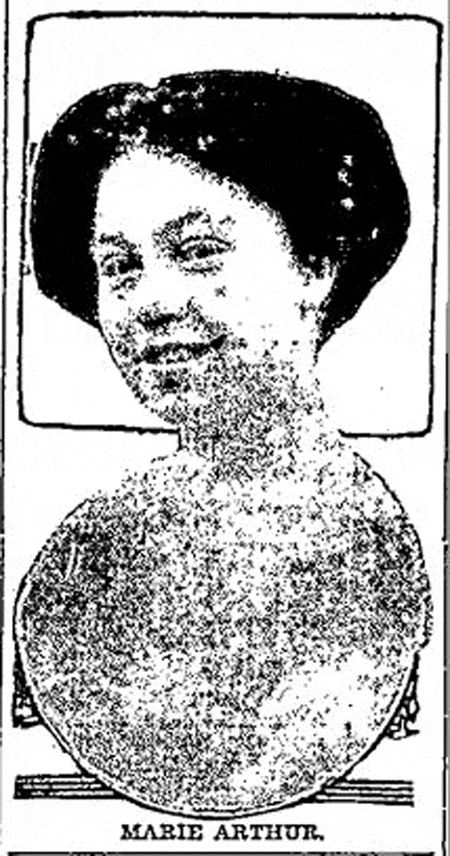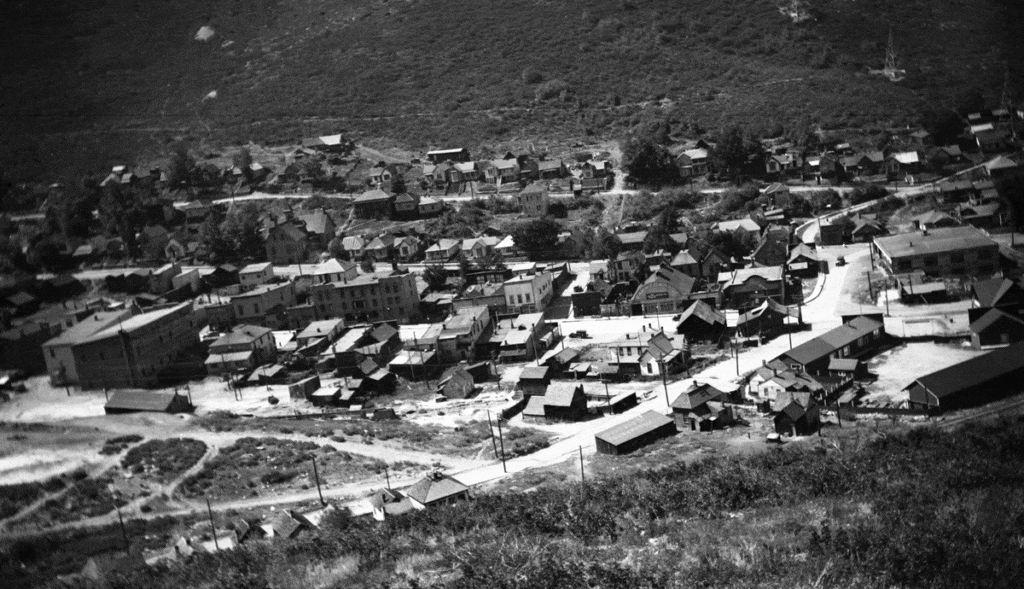Ten years before Chicago’s Murderess Row inspired the play, and later musical, Chicago, Park City had its own story fit for the stage. It had all the key players and plot points: a jealous woman, a cheating scoundrel, and a smoking pistol. It also featured a sympathetic jury and press looking for sensational news. Before Belva Gaertner (who inspired the character Velma Kelly) and Beulah Annan (aka Roxie Hart), there was Marie Arthur.
Marie Arthur was a nice Midwestern girl whose father was a minister. She came from a loving family, so the story goes. She followed a man out West, and that’s where the trouble began. Marie and her lover, Frank “Broadway” Jones, had been living in Salt Lake for about a year when a fit of jealous rage led to murder.

Credit: Published in the Salt Lake Telegram, January 10, 1914.
Marie would, at times, travel to Park City and Bingham to work the red light district to make money for her and Frank, while Frank stayed in Salt Lake and worked as a bartender. When Marie was away, Frank would keep company with Mae Dunbar. Marie had heard rumors of this and threatened to shoot both Mae and Frank if she ever caught them together. One night, while Frank and Marie were at a café, they ran into Mae, who nodded in greeting to Frank. This did not sit well with Marie and the next afternoon, Friday, January 9, 1914, she shot Frank twice, killing him. She then turned the pistol on herself in an attempt to take her own life.

Credit: Park City Historical Society & Museum, Kendall Webb Collection
For days and weeks to follow, the story made headlines in several Utah newspapers, including the Park Record. Motives were speculated and numerous reports were given regarding Marie’s critical condition and eventual recovery. She was dubbed the “woman slayer” and news of her trial, conviction, parole and eventual pardon captivated readers for the next fifteen months. The press was sympathetic to her plight, highlighting her physical wounds and emotional breakdown as well as her beauty and good behavior. She gained the sympathy of the court as well, who downgraded her charge from first degree murder to involuntary manslaughter, and then sentenced her to serve merely one year in the county jail. She was later granted parole, then fully pardoned so that she might go back to Kansas to care for her elderly father.
Unlike Chicago’s Roxie and Velma, Marie wasn’t necessarily looking to become famous, but she ended up that way, at least in Utah. It was the beginning of the era of the celebrity criminal, and not just in places like New York and Chicago. At a time when violence was considered an unnatural act for women, Utahns were fascinated by their own trigger-happy murderess. In the small mining community of Park City, especially, Marie Arthur was well-known, and the sensationalized story held a personal note for all who knew her.
Unfortunately, this was only the first act in Marie Arthur’s sordid tale of crime. Come back next week for the rest of the story…
Sources:
Price, Rebecca. “The Real Women of ‘Murderess Row’ and the Woman Who Told Their Story.” http://www.tpac.org/spotlight/the-real-women-of-chicagos-murderess-row-and-the-woman-who-told-their-story/
Otis, Ginger Adams. “The Girls of Murder City.” http://nypost.com/2010/08/08/the-girls-of-murder-city/
Eig, Jonathan. “The Real-Life Murderesses’ Row.” http://www.wsj.com/articles/SB10001424052748704164904575421630562374368
Gupton, Nancy. “Chicago: The True Murders That Inspired the Movie.” http://news.nationalgeographic.com/news/2003/03/0321_030321_oscars_chicago.html
“Q&A with Doug: Sex, Murder and Fame in Jazz Age Chicago.” http://www.douglasperry.net/qa.html
Hughes, Andrew S. “Murderesses’ Row: Musical ‘Chicago’ has real-life inspiration.” http://articles.southbendtribune.com/2007-03-23/news/26801631_1_murder-trials-gin-story
Slumming: Sexual and Racial Encounters in American Nightlife, 1885 – 1940. Heap, Chad.
“Woman Slayer Has A Slight Chance to Live.” Salt Lake Telegram. January, 10, 1914.
“Double Tragedy in Which Woman Does the Killing.” Ogden Standard. January 10, 1914.
“Park Float.” Park Record. January 10, 1914.
“Slayer Carries Her Doll to Hospital.” Salt Lake Telegram. February 10, 1914.
“Marie Arthur is Now Held at County Jail.” Ogden Standard. February 13, 1914.
“Lawyer is Retained by Marie Arthur.” Salt Lake Telegram. March 4, 1914.
“Marie Arthur Wants Parole From The County Jail.” Salt Lake Telegram. July 31, 1914.
“Marie Arthur Gets Parole From Jail.” Salt Lake Telegram. October 19, 1914.
“Marie Arthur Pleads for Full Pardon; Killed Jones.” Salt Lake Telegram. March 5, 1915.
“Pardon Granted to Marie Arthur: Woman Who Killed ‘Broadway’ Jones Earns Freedom by Behavior While Under Parole.” Salt Lake Tribune. March 28, 1915.
“Marie Arthur Pardoned; Killed Broadway Jones.” Salt Lake Telegram. March 28, 1915.
“Park Float.” Park Record. June 23, 1916.
“Police Court.” Park Record. September 9, 1916.
“Slayer and Brother Are Wed in Double Ceremony: Marie Arthur Becomes Wife of Park City Man, While Kin Marries Kansas Sweetheart.” Salt Lake Telegram. September 19, 1916.
“Marie Arthur Marries Miner of Park City: Ceremony Performed County Clerk’s Office; Brother Weds, Too.” Salt Lake Herald. September 20, 1916.
“Park City Couple Married.” Park Record. September 22, 1916.
“Park City Man Gun Victim of Marie Arthur.” Salt Lake Telegram. May 22, 1922.
“Marie Makes Good.” Salt Lake Telegram. May 24, 1922.
“Utah Prison Has Held Few Women On Murder Charge.” Salt Lake Telegram. June 5, 1922.
“Marie Arthur Again Is Held For Shooting.” Salt Lake Telegram. February 3, 1926.
“Marie Lowry Again Wields Gun.” Park Record. February 5, 1926.